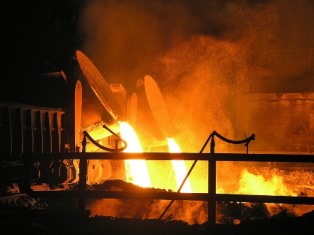1.1 Particulate nature of matter and chemical change
Written specifically for students to provide help and support for the IB Diploma chemistry programme this page provides full coverage of the syllabus content of Topic 1.1 Particulate nature of matter and chemical change. It encourages you to think critically and provides many questions with full worked answers so that you can monitor and improve your knowledge and understanding.
.png)

 Learning outcomes
Learning outcomes
.png) After studying this topic you should be able to:
After studying this topic you should be able to:
Understand:
- atoms of different elements combine in fixed ratios to form compounds. These compounds have different properties from their component elements.
- mixtures retain their individual properties as they contain more than one element and/or compound that are not chemically bonded together.
- mixtures are either heterogeneous or homogeneous.
Apply your knowledge to:
- deduce chemical equations when the reactants and products are specified.
- use the correct state symbols (s), (l), (g) and (aq) in equations.
Relationships & vocabulary
Nature of Science
This sub-topic stresses both the importance of language in chemistry and the reliability and replication of quantitative measurements upon which chemical equations are based.
In the early nineteenth century John Dalton (1766–1844) set out values for atomic weights (now atomic masses) of the elements and showed, by making careful and accurate reproducible measurements, that two elements (A and B) combine to make a compound in one or more set ratios, AB, AB2 A2B etc. This paved the way for chemical formulas and chemical equations.
International-mindedness
The use of chemical symbols and equations are international. This means that scientists can effectively communicate with each other without the need for translation.
The International Union of Pure and Applied Chemistry (IUPAC) is the world authority in developing standardized chemical nomenclature for both organic and inorganic compounds.
For examples and more links to International mindedness, Theory of knowledge, utilization etc. see separate page which covers all of Topic 1: Stoichiometric relationships.
Vocabulary
| melting (point) | freezing (point) | boiling (point) | vaporization |
| condensation | sublimation | evaporation | deposition |
Learning slides
You can use this slide gallery for learning or for reviewing concepts and information. It covers all the key points in the syllabus for this sub-topic.
Something to think about
One of the examples given for ‘Utilization’ for this sub-topic is 'Atom Economy'. Although atom economy cannot really be examined under this sub-topic is does appear on the main syllabus in the core part of both Option A - Materials (A.5 - Polymers) and Option B: Biochemistry (B.6 - Biochemistry and the environment). It should also probably be mentioned when Green chemistry is discussed in the core part of Option D: Medicinal chemistry (D6 - Environmental impact of some medications). For this reason it is an important concept and is worth discussing during this sub-topic.
In chemical synthesis it is desirable not only to obtain a high yield but also to achieve the highest conversion efficiency to avoid waste. The conversion efficiency is known as the atom economy. It is a measure of the amount of starting materials that become useful products. A high atom economy means that fewer natural resources are used and less waste is created.
To calculate the atom economy use the following steps:
1. Write the balanced equation for the reaction taking place.
2. Calculate the relative molecular mass of each product and then the total mass of each product formed assuming molar quantities. Note that this is the same as the total mass of the reactants.
3. Calculate the relative molecular mass of each desired product and then the total mass of each desired product formed assuming molar quantities.
4. Atom economy = (total mass of desired product(s) ÷ total mass of all products) x 100
 For example, consider the production of iron by the reduction of iron(III) oxide using carbon monoxide in a blast furnace
For example, consider the production of iron by the reduction of iron(III) oxide using carbon monoxide in a blast furnace
Fe2O3(s) + 3CO(g) → 2Fe(s) + 3CO2(g)
The total mass of products formed = 2 x 55.85 + 3 x [12.01 + (2 x 16.00)] = 243.73 g
The total amount of iron (the desired product) formed = 2 x 55.85 = 111.70 g
The atom economy for this reaction is 111.70 / 243.73 x 100 = 45.8%
Obviously if a use can also be found for the carbon dioxide then the atom economy for this particular reaction will increase. Alternatively the atom economy for the industrial process could be improved, as it is in modern blast furnaces, by using hydrogen as the reducing agent.
Test your understanding of this topic
(Note that your teacher may have restricted your access to some or all of these questions and worked answers if they are going to use them as a class test or set them as an assignment.)
For ten 'quiz' multiple choice questions with the answers explained click on MC test: Nature of matter & chemical change.
For short-answer questions see Nature of matter & chemical change questions.
More resources
1. A video produced by the Chemical Heritage Foundation on how John Dalton discovered atoms, determined their atomic weight and laid the basis for the use of chemical equations to describe reactions.
2. States of matter. A simple description of the four states of matter, i.e. it also includes the plasma state.
3. A video by Fuse school - Global education that clearly explains Atom economy .

 IB Docs (2) Team
IB Docs (2) Team 


























